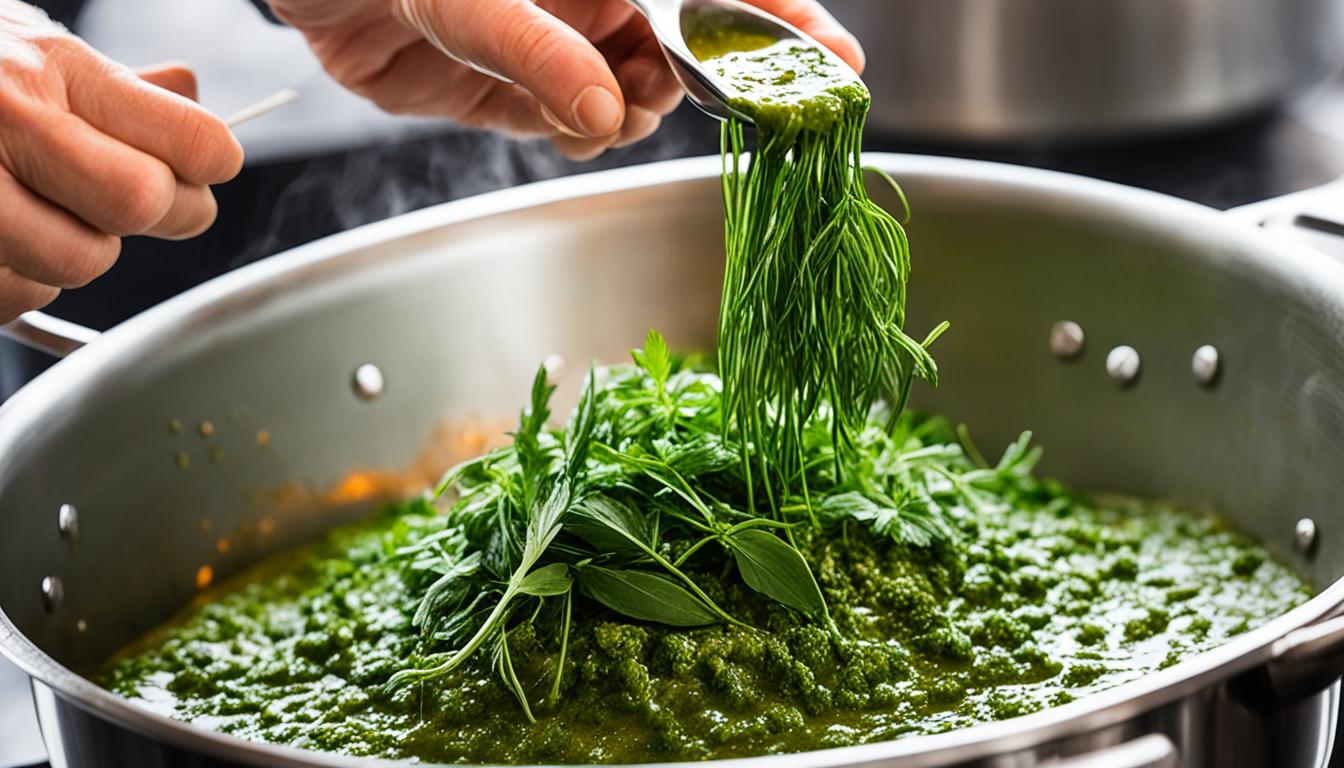When it comes to cookware, we often rely on our trusty saucepans for all our cooking needs. But have you ever wondered if there’s a better alternative out there? What if there’s a cookware item that can revolutionize how we prepare our favorite dishes? That’s where sauciers come in.
But wait, what’s the difference between saucepans and sauciers? Aren’t they the same thing? Well, not quite. These kitchen essentials may look similar, but they have distinct features that set them apart.
So, why should we bother with sauciers when we already have saucepans? And what advantages do sauciers offer that make them worth considering? Let’s delve into the key differences between saucepans and sauciers to uncover the answers.
What is a Saucier Used For?
A saucier is a versatile pan that serves a multitude of purposes in the kitchen. Its unique design and shape make it an essential cooking tool for various culinary endeavors.
One of the primary uses of a saucier is for whisking and stirring ingredients. Its larger cooking surface area compared to a saucepan makes it ideal for reducing sauces, broths, and stocks efficiently. The curved walls of a saucier prevent ingredients like grains from sticking to the bottom, allowing for easy stirring, making it particularly suitable for dishes like risotto.
In addition, the curved bottom of a saucier allows for even distribution of sauce when finishing pasta dishes in their sauce. The gentle curvature ensures that each strand of pasta is coated with the flavorful sauce, enhancing the overall taste and presentation of the dish.
Furthermore, sauciers are excellent for making stovetop jams, gravy, and sweet dessert sauces like chocolate ganache and caramel. Their wide, shallow design provides ample surface area for the ingredients to cook and reduce, resulting in rich and flavorful creations.
Overall, a saucier is an indispensable tool for any cook or chef. Its versatility, ease of use, and ability to accommodate a wide range of cooking techniques make it a valuable asset in the kitchen.
Benefits of Using a Saucier:
- Efficiently reduces sauces, broths, and stocks
- Prevents ingredients from sticking to the bottom
- Allows for easy stirring and whisking
- Enables even distribution of sauce in pasta dishes
- Ideal for making stovetop jams, gravy, and dessert sauces
What is a Saucepan Used For?
A saucepan is a versatile tool that serves multiple purposes in the kitchen. It is a must-have cooking equipment for any home chef. Let’s explore the various saucepan uses and how it can be a valuable addition to your kitchen tools.
1. Heating Liquids
A saucepan is perfect for heating liquids like soups, stocks, and sauces. Its high walls and straight sides prevent the liquid from spilling over the edges while providing ample space for even heating. Whether you’re warming up a comforting soup or melting chocolate for a dessert, a saucepan makes the process efficient and convenient.
2. Cooking Grains
When it comes to cooking grains like oatmeal or rice, a saucepan is an excellent choice. Its flat bottom and direct heat contact allow for quicker and more efficient cooking. The high walls help prevent the grains from overflowing as they expand. With a saucepan, you can achieve perfectly cooked grains without any hassle.
3. Simmering Dishes
Saucepans are great for simmering dishes like confit or stews. The even heat distribution and controlled heat retention make it easier to maintain a gentle simmer, ensuring that your dish cooks evenly. Whether you’re making a flavorful confit or preparing a hearty stew, a saucepan provides the ideal cooking environment.
4. Reheating Leftovers
When you have leftovers that need reheating, a saucepan is a reliable kitchen tool. Its spacious design allows for efficient reheating of larger portions. Whether it’s a warm bowl of soup or yesterday’s pasta, a saucepan will heat them evenly, giving you a delicious meal in no time.
5. Quick Pickles
For those who love pickled flavors, a saucepan can be a game-changer. Making quick pickles becomes a breeze with a saucepan’s high walls and capacity. Simply bring your pickling liquid to a boil, add your vegetables, and let them simmer until they’re pickled to perfection.
As you can see, a saucepan offers versatility and convenience in the kitchen. From heating liquids to cooking grains and simmering dishes, it is an essential tool for any cooking enthusiast. So, make sure you have a good-quality saucepan in your collection of kitchen tools for effortless and efficient cooking.
Which One Should You Choose?
Both saucepans and sauciers have their advantages and are useful in different cooking scenarios. When it comes to whisking, stirring, and reducing liquids, sauciers are the star players. Their design makes them perfect for dishes that require constant motion and precision. Whether you’re making a delicate sauce or a creamy risotto, a saucier will be your trusted companion in the kitchen.
On the other hand, saucepans excel in their ability to simmer grains, heat liquids, and even deep fry. With their high walls and straight sides, saucepans prevent liquids from bubbling over, while their flat bottoms ensure direct heat contact for efficient cooking. They’re a versatile choice for everyday cooking tasks and can handle a wide range of recipes.
Ultimately, the choice between a saucepan and a saucier boils down to your specific cooking needs and preferences. If you find yourself frequently making sauces or dishes that require constant stirring, a saucier would be a valuable addition to your kitchen arsenal. However, don’t feel like you have to choose just one. Having both a saucepan and a saucier in your cookware collection offers versatility and convenience, allowing you to tackle various cooking situations with ease.
When deciding which cookware to invest in, consider factors such as materials, size, and compatibility with your stovetop. Quality saucepans and sauciers can enhance your cooking experience and deliver delicious results. So, whether you’re a saucier enthusiast or a saucepan aficionado, make a choice that suits your style and brings out the chef in you.
